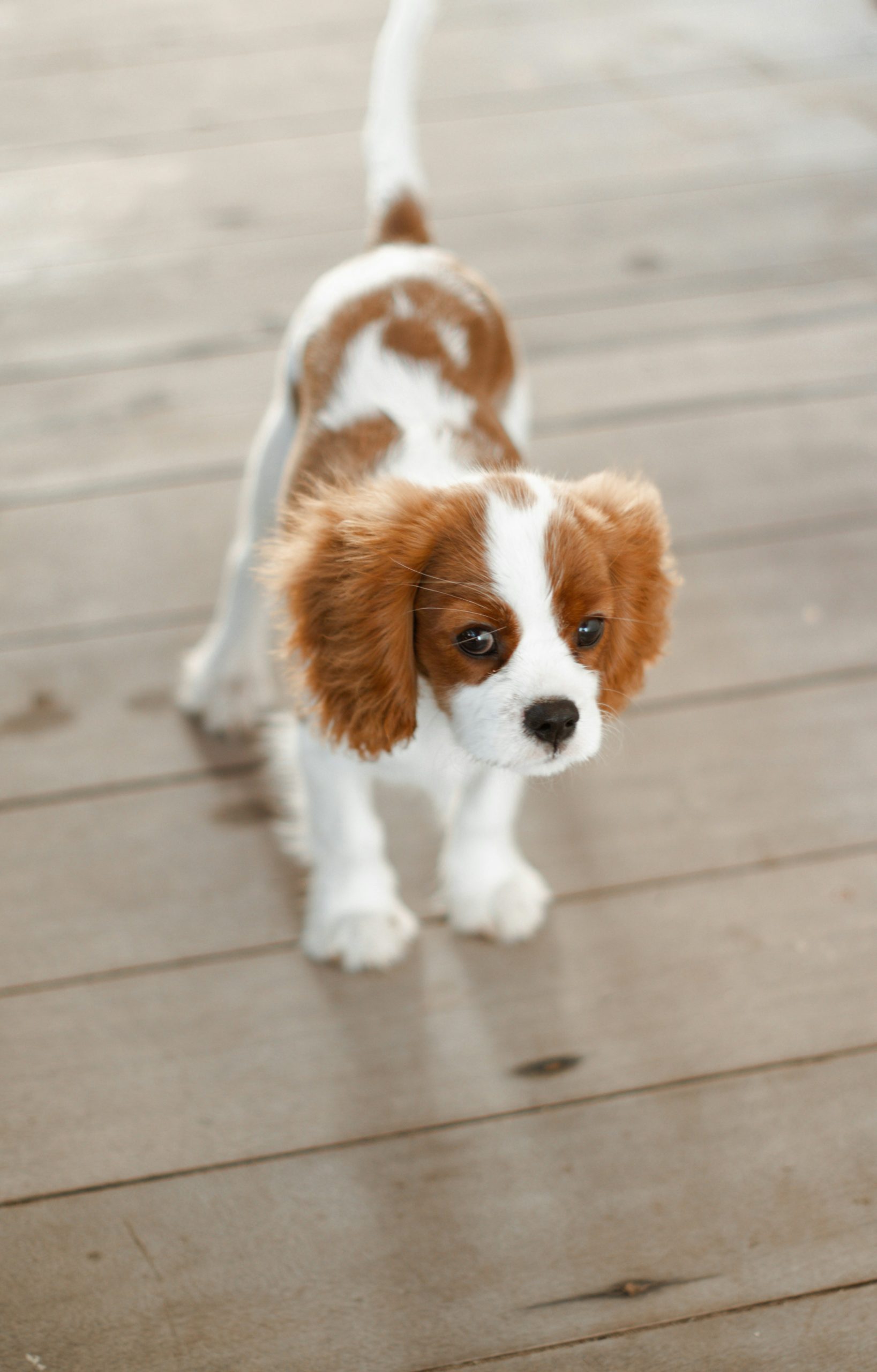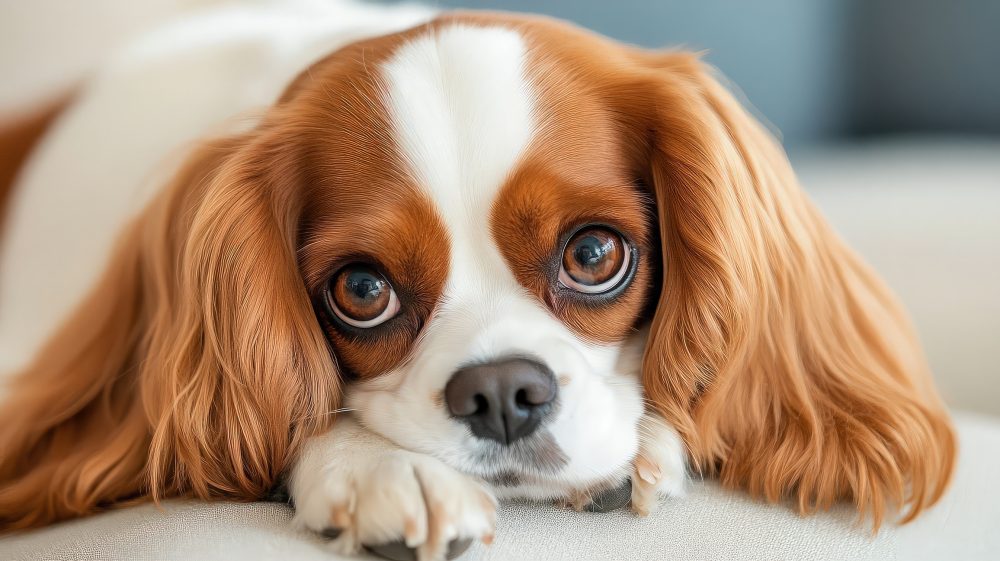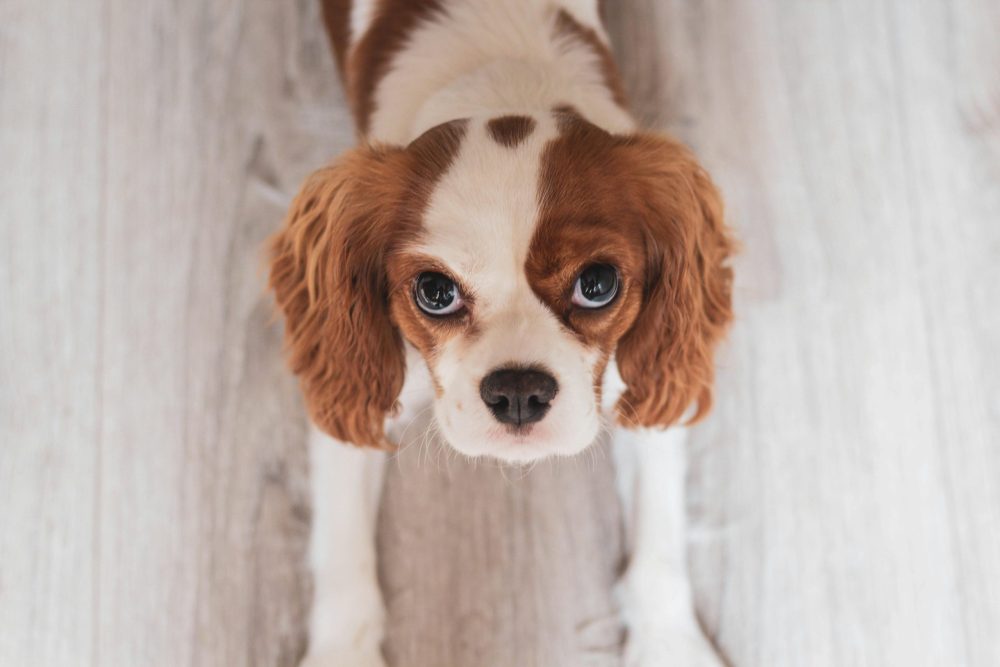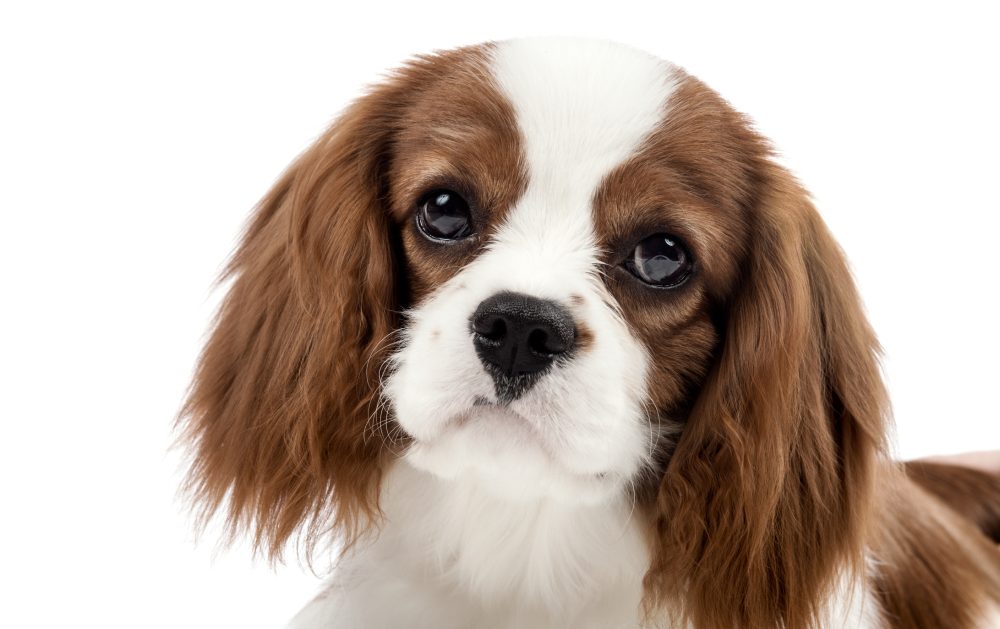
The AKC breed standard of the utterly delightful Cavalier King Charles Spaniel states four acceptable colors: Blenheim, Black and Tan, Black and White, and Ruby, but this post isn’t about color, it’s about where color appears on a Blenheim’s head, and on the head of a Tricolor.
To the heritage breeder of these colors, and to the person exhibiting them in a show ring, it’s important that that color be evenly spaced on the dog’s head and surrounding both eyes. As an aside for anyone wondering, a ruby is whole colored, and a Black and Tan calls for “rich, bright tan markings over eyes.”

Photo by ©Atep Sobarudin/ dreamstime
The Cavalier King Charles is a companion dog. On this site, we consider most dogs to be companions, but as this one is a toy breed, the Cavalier’s expressed purpose is an an intimate. As snooty at this may sound, we like to be pleased when we look at our dogs, and when those large, round eyes of a Cavalier look back, it is both endearing and irresistable.
Without the eyes being accentuated by “goggles” of color, however, the dog’s expression falls short of an important breed characteristic: A sweet, gentle, melting countenance.
Little doubt that the dog in the photo below is a sweetheart, but in terms of appearances, his face is less “soft” without his eyes being accentuated by a “surround-sound” of color:

Photo by Steshka Willems
There is a name for a Cavalier who has white, or a lot of white, around one or both eyes, and that is “clown face.” The dog above does not have a true “clown face,” but this one does. So does this one.
Look again at a Cav with proper color placement:

Photo by © Mnogosmyslov Aleksey | dreamstime
See what we mean? It’s somehow sweeter, and dare we say it, more inviting because the eyes are softer and have a lustrous, limpid look.
Color placement does not a show dog make, nor does it impact the ability of a mismarked Cavalier to be a loving, loyal companion. But for the person considering a shot at exhibiting their Cav, it’s important to know that a “clown face” is regarded as a fault.
Top image by Izabelly Marques
